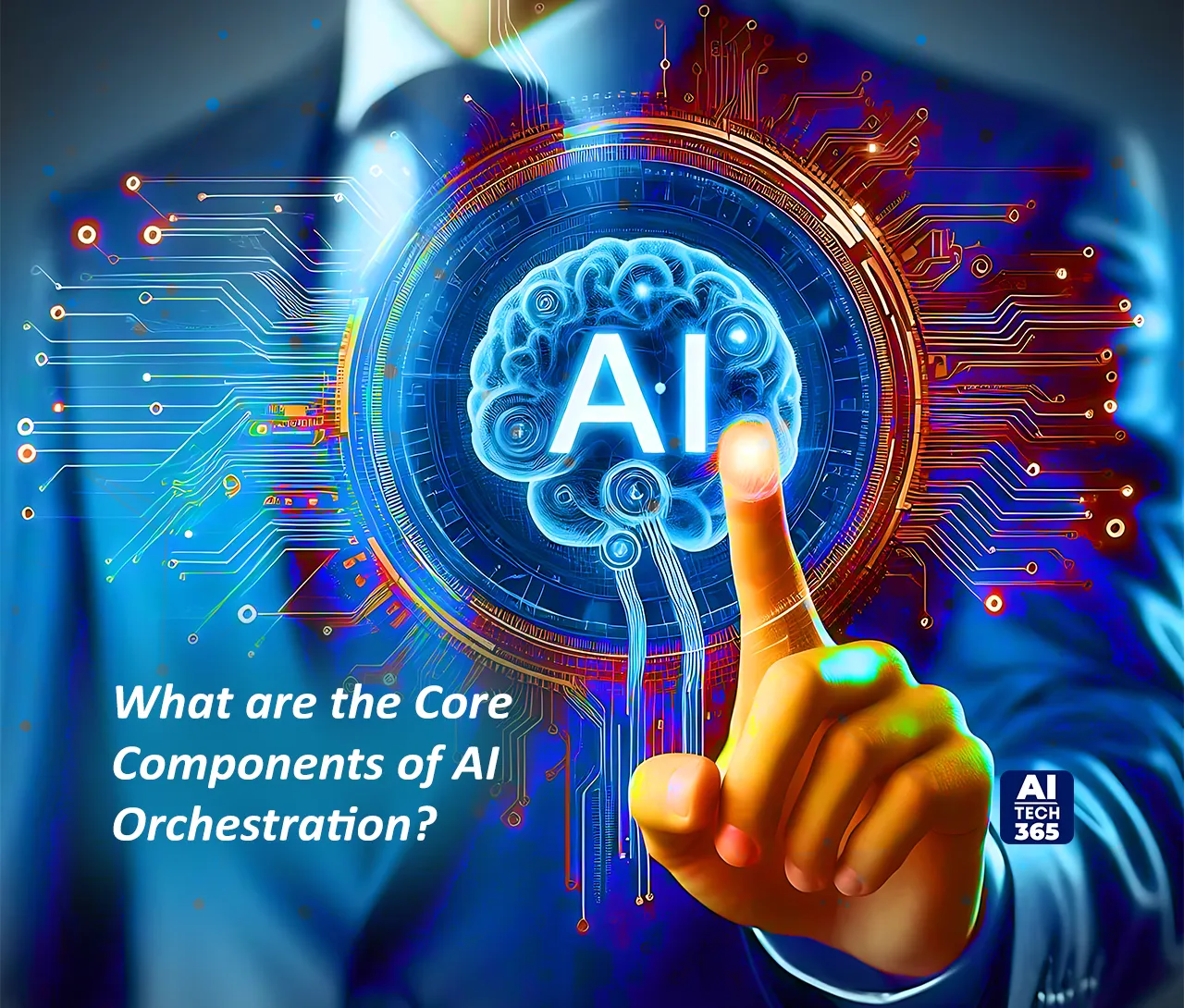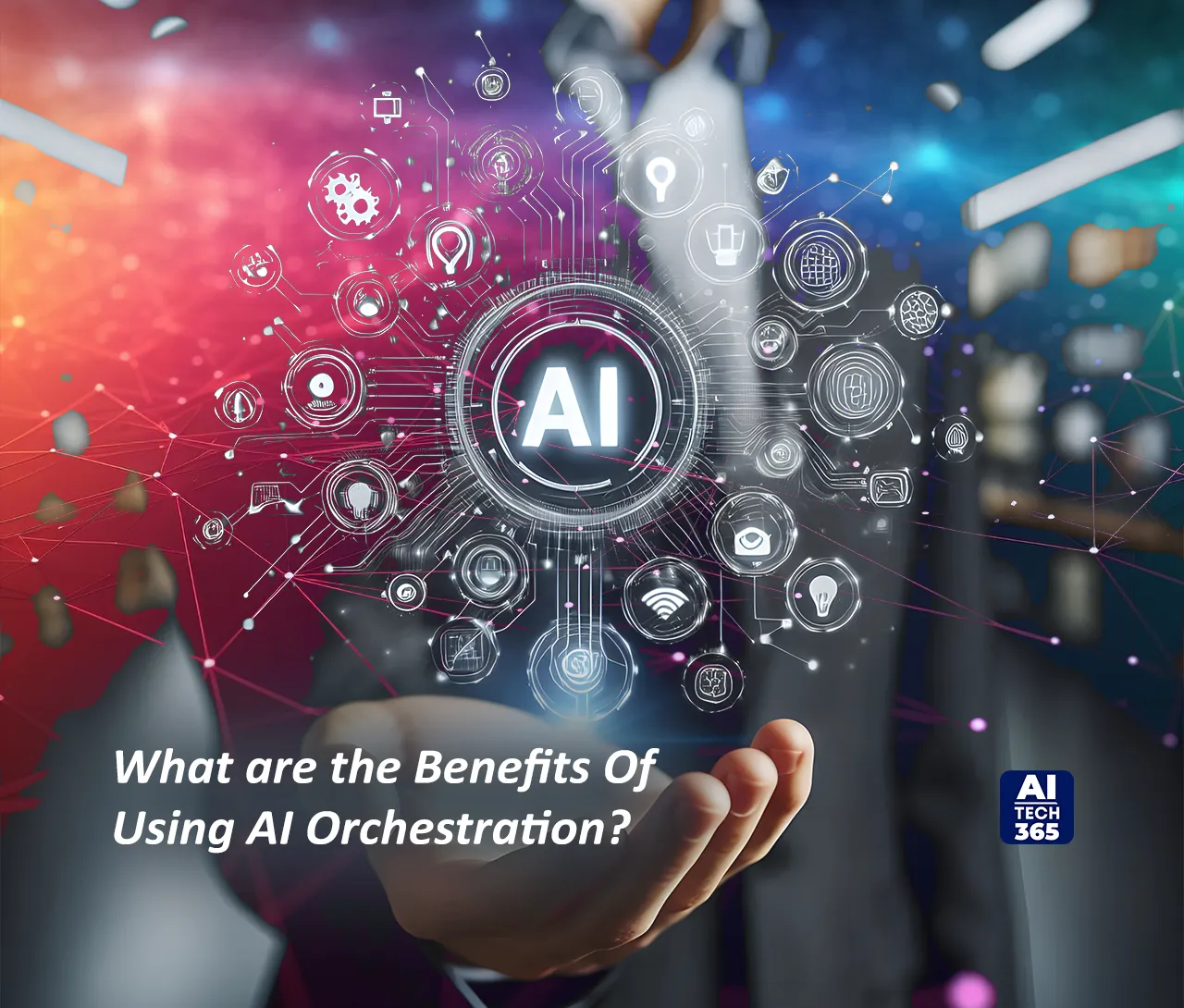As organizations are exploring opportunities to integrate more artificial intelligence (AI) tools in their enterprise tech stack, their processes can be fragmented and siloed. It results in an operation nightmare, which can have negative consequences on the business.
The true potential of AI lies in its capability to work cohesively and seamlessly in integration with current systems and processes. Organizations face challenges in making AI systems talk and work collaboratively with each other. One of the most effective solutions to make AI work cohesively with each other is AI orchestration. The majority of businesses are not taking this approach. Hence, if you embrace AI orchestration at your enterprise, you will get a competitive edge by utilizing the complete potential of AI in your workplace.
In this blog, let us have a look at what AI orchestration is, its core components, its benefits, and its top three tools.
What Is AI Orchestration?
AI orchestration is a technique for collaborating and managing the implementation, integration, and interaction of multiple AI components within a system or work process. This approach encompasses orchestrating the running of various AI models, handling data flow, and enhancing the usage of computational resources.
The goal of AI orchestration is to simplify and automate the end-to-end lifecycle of AI tools including design, development, training, implementation, and monitoring. It is a strategy that ensures effective collaboration of various AI models, infrastructure components, and services. As a result, businesses will be able to have enhanced overall performance, responsiveness of AI tools, and scalability. At its core, AI orchestration serves as a conductor, which harmonizes the different elements of any AI ecosystem to improve workflow efficiency and accomplish the best business outcomes.
Also Read: 10 Top AI Companies To Know Before 2024 Ends
What are the Core Components of AI Orchestration?

AI orchestration includes multiple core components working together without any friction to enhance the efficiency and effectiveness of AI systems within their enterprise. Following are a few core components of AI orchestration:
● Management
Efficient management of AI tools is essential for ensuring the health and effectiveness of AI tools during their end-to-end lifecycle. It is critical to manage the entire lifecycle of every AI application from design, development, testing, implementation, maintenance, and updates.
Organizations need to regularly monitor the performance of their AI systems to ensure they are executing optimally and make changes as required. There are various compliance and security requirements that the AI models have to comply with. Enterprises need to ensure that all their AI operations are in compliance with all the enforced laws and regulations by maintaining stringent security measures to prevent data and systems from being accessed by unauthorized persons.
● Automation
Automation refers to the utilization of technology to achieve tasks that can be executed by humans. It forms the core of the majority of AI applications. There are various tools in the market that help organizations automate their coding tasks to reduce the workload on their developers, which they can utilize to do other constructive tasks and accelerate their processes. For example, Github’s Co-Pilot tool is a tool that helps businesses to automate their coding tasks. AI orchestration can automate the interactions between various AI tools and systems.
There are various tools and systems that deploy the latest AI models or upgrades to current models throughout various environments automatically. A few systems are self-healing systems that are designed to identify and rectify mistakes or inefficiencies without any need for a human to intervene. One of the key components of AI orchestration platforms is that they can dynamically allocate computational resources depending on the requirements and priorities of various AI tasks.
● Integration
Integration is essential for allowing various AI systems and data sources to work cohesively. In order to ensure successful integration, all components of the AI ecosystem must interact and execute as a unified unit.
Data plays a crucial role in AI applications. It is critical that businesses ensure that there is a streamlined flow of information between systems and that all AI tools have access to the data they require to function efficiently.
Different AI models need to be seamlessly integrated with each other to streamline communication with each other and potentially improve each other’s capabilities or outputs.
What are the Benefits Of Using AI Orchestration?

AI orchestration is a bridge that connects various AI databases, algorithms, services, models, and humans. Utilizing AI or LLM capabilities can be as easy as a chatbot application that needs a user query and returns an LLM-generated response. Here are a few advantages that the best orchestration tools can offer to organizations to develop AI-powered applications:
1. Enhanced Dependability
Orchestration tools can assist in reducing downtime and ensuring continuous service delivery with the help of automated scheduling and failure management mechanisms.
2. Improved efficiency
Leveraging parallel processing, task routing, and dynamic scaling businesses can optimize their computing resources. It helps to improve the efficiency and output of resource-intensive tasks from different services. This is particularly crucial in AI tasks where massive volumes of data are processed at any given time.
3. Higher Flexibility and Scalability
AI orchestration helps organizations to easily add new tasks or switch between the AI models, datasets, and algorithms in the current work operations. It enables enterprises to adapt and evolve with the changing needs and the recent innovations.
4. Unified Governance
AI orchestration platforms through a single tool offer businesses clarity into the complete processes throughout different systems. Hence, it has become easier to develop, maintain, and troubleshoot AI-powered workflows. It offers complete visibility into temporary states at every moment as it progresses through the collaborated tasks.
5. Real-time Analytics
Enterprises can get insights into the work process performance, making it simpler to improve resource utilization or identify inefficiencies in AI systems.
AI orchestration tools offer immense benefits to organizations that have multiple AI models, applications, and frameworks to accomplish their goals. Various AI orchestration tools are available for organizations to streamline their AI operations.
Top 3 AI Orchestration Tools
Here is the list of the top three AI orchestration tools:
1. Orchestrate
Orchestrate is a low-code security orchestration and automation (SOA) tool that works throughout the cloud, hybrid, and on-premise environments.
2. Azure Data Factory
Azure Data Factory is a data orchestration service that assists in automating data movement and transformation. This tool enables users to develop data pipelines, transform, structure, and move data, and schedule pipeline runs.
3. Google Kubernetes Engine (GKE)
GKE is a managed orchestration service that offers an ecosystem for deploying, managing, and scaling Docker containers on the Google Cloud Platform.
AI Orchestration in a Nutshell
Modern AI orchestration suffices the needs of today’s processes which make dynamic utilization of heterogeneous and resource-intensive infrastructure. Modern AI orchestration assists organizations in enhancing and automating AI application management with efficiency, scalability, and ease of use.


